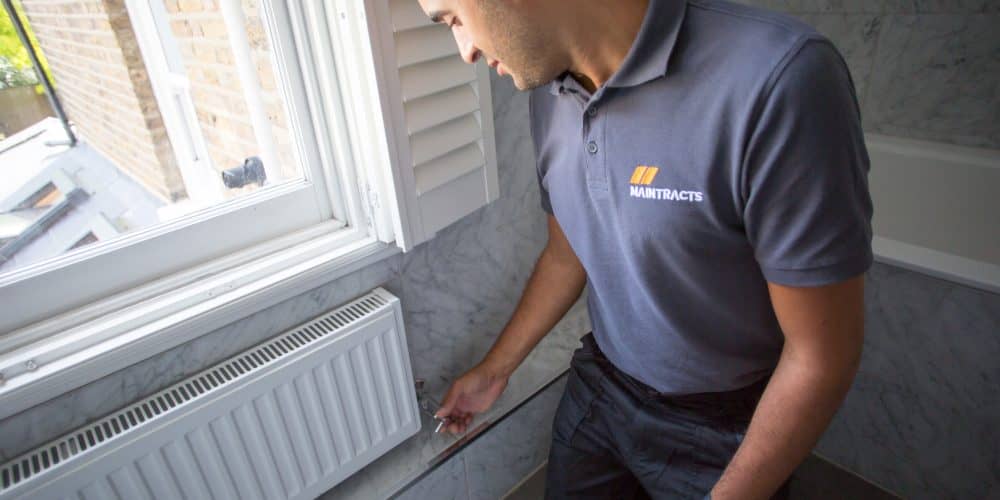Central heating systems are a little like us – it only takes a little love, affection and care for them to run reliably and effectively, but if they break down, you’ll know about it! As winter looms, we are all keen to make sure our homes are prepared to cope with the colder months, so we’re kept toasty and warm throughout. Here are a few ways that you can prepare your central heating system for winter and keep those energy bills in check too.
Boiler servicing
Regular boiler servicing plays an important role in maintaining your central heating and hot water systems and ensures that your boiler continues to meet your needs.
Not only is a well-maintained boiler more efficient to run, makes it easier to heat your home and uses less fuel in the process, but it saves you money on your energy bills too. A yearly boiler service can help spot issues before they start to become a problem and potentially cause your boiler to breakdown completely. There is nothing worse than being without hot water and heating in the winter is there?
Plus, regular maintenance will prevent dangerous faults, including carbon monoxide leaks from occurring.
Bleed your radiators
One of the most common signs that you have air trapped in your system is noise. If your radiator starts gurgling some unusual sounds it is likely that it is the sound of air being pushed around your system. The other tell-tale sign is that your rads may feel cold in places. Sound familiar? Panic not, it is quite an easy fix.
Switch off the central heating system completely, then wait for your radiators to cool (otherwise you may risk burning yourself). Open the bleed valve with a radiator key (or flat headed screwdriver). You will hear a hiss as the trapped air escapes. As soon as the first trickle of water escapes, it’s time to close the valve again, before you turn the heating system back on. If you are having to bleed radiators more often than not, you may need to call in a professional to check your system.
Bleeding radiators is a worthwhile task to carry out regularly. If you allow trapped air bubbles to remain in a radiator, over time it may cause damage. Plus, you’ll be wasting a ton of energy (and money) failing to heat up a room despite all the hot water going into it.
Upgrade your heating by adding a thermostat
Programmable thermostats reduce the need to constantly change the heat settings in your home by operating a scheduled system. Plus, The Department of Energy state that you can save as much as 10% a year on heating and cooling by simply turning your thermostat back 7-10°F for 8 hours a day from its normal setting. Thermostats can of course, be adjusted manually, but programmable thermostats will avoid any discomfort by returning temperatures to normal before you wake or return home.
Programmable thermostats are not only user friendly, but they will allow you to schedule your heating to operate how you want it to, when you want it to, and you don’t have to worry about remembering to turn the heating on or off or up or down! If you want a bit of extra warmth in the mornings to ease those early morning wake ups, you can set the thermostat to turn the heating up for a few hours while you get ready. Then set it to lower in temperature again while you are out at work and increase the temperature again before you get home so you can stay nice and toasty in the evenings.
With a traditional thermostat, energy costs can rise easily. For example, if you are particularly cold and want to turn the heating up, more energy will be expended by your system to increase the temperature, which can result in higher heating bills. However, programmable thermostats will allow you to set the heating to come on an hour before you get up, for example, eliminating the need for you to change the temperature, and helps keep your heating bills down. Careful programming means you are in control of how much you spend.
If you already have a programmable thermostat, but it doesn’t seem like your thermostat is controlling your system properly, you may need to check your system is working correctly and that there is no fault with the thermostat or its signal to the furnace. A professional will be able to test your thermostat for you.
Underfloor heating maintenance and repair
Whether you have an electric-based or water-based underfloor heating system, we can oblige. Underfloor heating operates at a lower temperature than traditional radiators and is often more energy efficient as a result, making it an appealing cost-effective option. If you’ve noticed a problem, don’t delay in getting it repaired. Regular maintenance will catch problems early so you are not left uncomfortable when you need your heating the most.
Insulate your home
Start with insulating your pipes before the winter kicks in to reduce the risk of them freezing. Frozen pipes will result in no flowing water, so avoid at all costs. If the pipes freeze there is a high risk that one will leak once they have finally thawed out.
Once your pipes are covered, work on insulating your home as much as you can, particularly your loft space. A well-insulated home could significantly reduce your energy bills.


